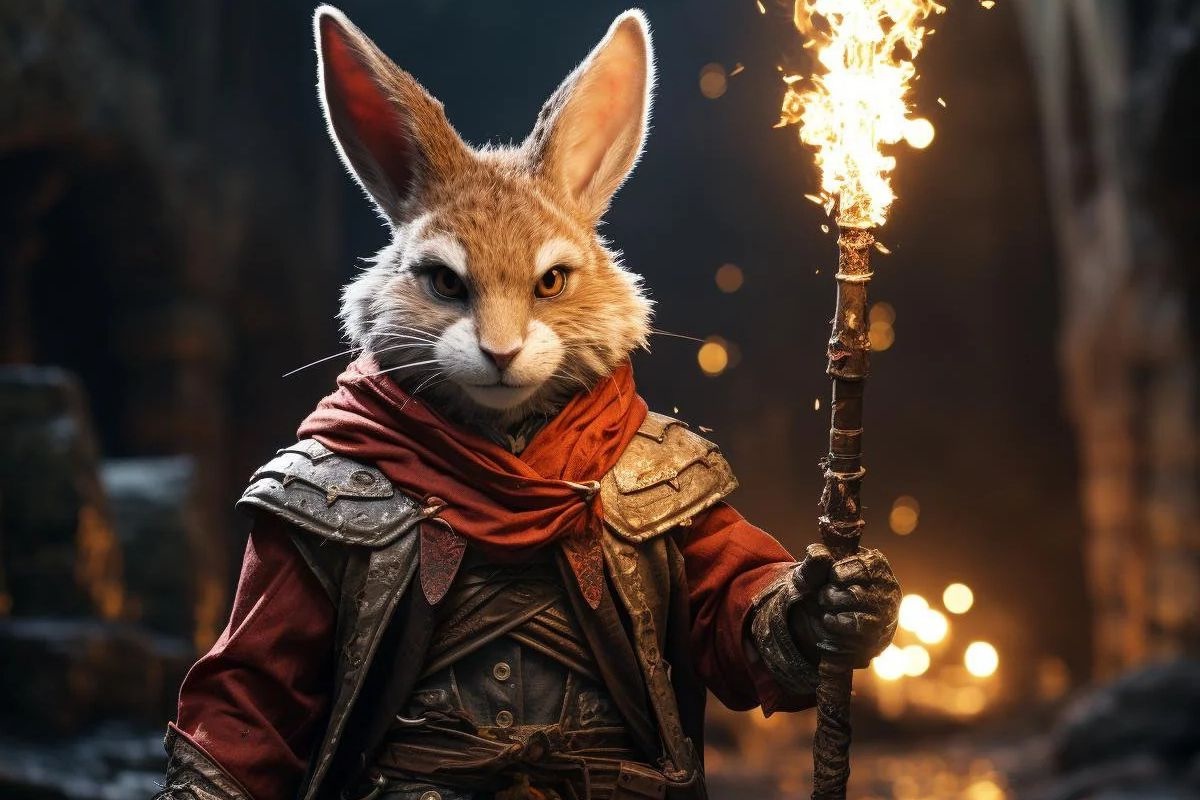
Anthropomorphic characters have fascinated people for centuries. These unique beings blend human traits with animal forms, creating a captivating mix of both worlds. From ancient myths to modern cartoons, they appear everywhere. But what makes them so intriguing? Anthropomorphism allows us to see animals in a new light, often reflecting our own emotions and behaviors. This connection can make stories more relatable and engaging. Whether it's a wise old owl or a mischievous fox, these characters often teach valuable lessons. Ready to dive into the world of anthropomorphic characters? Here are 28 facts that will surprise and delight you!
Key Takeaways:
- Anthropomorphic characters are fictional beings with human traits, emotions, and intentions, blending the familiar with the fantastical to captivate audiences in literature, movies, and video games.
- These characters resonate with people because they exhibit human emotions, fit into various genres, and provide an escape from reality while addressing real-world themes. They have also influenced culture and societal views.
What Are Anthropomorphic Characters?
Anthropomorphic characters are fictional beings that possess human traits, emotions, or intentions. These characters often appear in literature, movies, and video games, captivating audiences with their unique blend of human and animal characteristics.
- Anthropomorphism comes from the Greek words "anthropos" (human) and "morphe" (form).
- Mickey Mouse, created by Walt Disney, is one of the most famous anthropomorphic characters.
- Aesop's Fables feature some of the earliest examples of anthropomorphic animals, like the tortoise and the hare.
- Zootopia, a popular animated film, showcases a world entirely inhabited by anthropomorphic animals.
- Sonic the Hedgehog is a well-known video game character with human-like speed and agility.
- Teenage Mutant Ninja Turtles are anthropomorphic turtles trained in ninjutsu.
Why Are Anthropomorphic Characters Popular?
These characters resonate with audiences because they blend the familiar with the fantastical. They allow creators to explore human experiences in unique and engaging ways.
- Relatability: People find it easier to connect with characters that exhibit human emotions and behaviors.
- Versatility: They can fit into various genres, from comedy to drama to action.
- Symbolism: Often used to represent human traits or societal issues.
- Escapism: Provide an escape from reality while still addressing real-world themes.
- Merchandising: Their unique designs make them popular in toys, clothing, and other merchandise.
Famous Anthropomorphic Characters in Literature
Literature has a long history of using anthropomorphic characters to tell compelling stories. These characters often serve as metaphors for human behavior and societal norms.
- Winnie the Pooh: A beloved bear with human-like friendships and adventures.
- The Cheshire Cat: From "Alice's Adventures in Wonderland," known for its mischievous grin and cryptic advice.
- Aslan: The lion from "The Chronicles of Narnia," symbolizing bravery and sacrifice.
- Mr. Toad: From "The Wind in the Willows," known for his reckless behavior and adventures.
- Charlotte: The spider from "Charlotte's Web," who displays human-like intelligence and compassion.
Anthropomorphic Characters in Movies and TV Shows
Movies and TV shows have brought many anthropomorphic characters to life, making them household names.
- Bugs Bunny: A clever rabbit known for his catchphrase, "What's up, Doc?"
- Scooby-Doo: A talking Great Dane who solves mysteries with his human friends.
- Simba: The lion from "The Lion King," who goes through a journey of self-discovery.
- Rocket Raccoon: From "Guardians of the Galaxy," a genetically modified raccoon with a sharp wit.
- BoJack Horseman: A horse who is a washed-up actor dealing with personal issues in a human-like world.
Anthropomorphic Characters in Video Games
Video games often feature these characters to create immersive and engaging experiences for players.
- Crash Bandicoot: A genetically enhanced bandicoot who battles evil scientists.
- Star Fox: A team of anthropomorphic animals piloting spacecraft to save the galaxy.
- Ratchet and Clank: A duo consisting of a lombax and a robot, known for their adventurous spirit.
- Banjo-Kazooie: A bear and bird team that goes on various quests.
- Spyro the Dragon: A young dragon with human-like curiosity and bravery.
The Cultural Impact of Anthropomorphic Characters
These characters have left a significant mark on culture, influencing various forms of media and even societal views.
The Magic of Anthropomorphic Characters
Anthropomorphic characters bring stories to life in ways that purely human characters sometimes can't. They blend human traits with animal forms, creating unique personalities that captivate audiences. From classic literature to modern animation, these characters have a special place in our hearts. They teach lessons, evoke emotions, and often provide a mirror to our own behaviors and societies.
Whether it's Mickey Mouse's timeless charm or Rocket Raccoon's edgy humor, these characters resonate across generations. They offer a mix of familiarity and fantasy, making them unforgettable. So next time you watch a movie or read a book featuring an anthropomorphic character, take a moment to appreciate the creativity and thought behind them. They’re not just animals with human traits; they’re a testament to the boundless imagination of storytellers.
Frequently Asked Questions
Was this page helpful?
Our commitment to delivering trustworthy and engaging content is at the heart of what we do. Each fact on our site is contributed by real users like you, bringing a wealth of diverse insights and information. To ensure the highest standards of accuracy and reliability, our dedicated editors meticulously review each submission. This process guarantees that the facts we share are not only fascinating but also credible. Trust in our commitment to quality and authenticity as you explore and learn with us.
